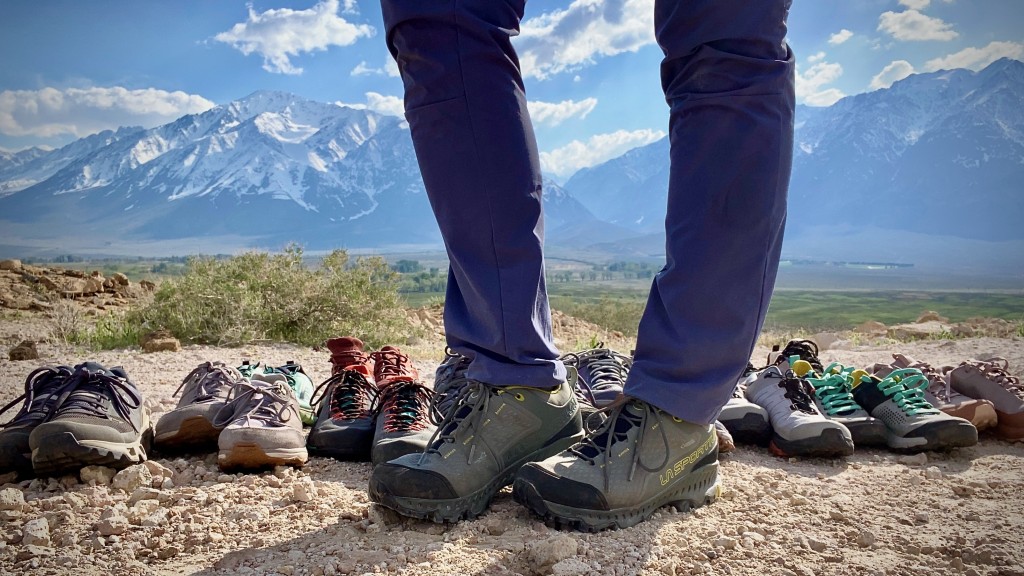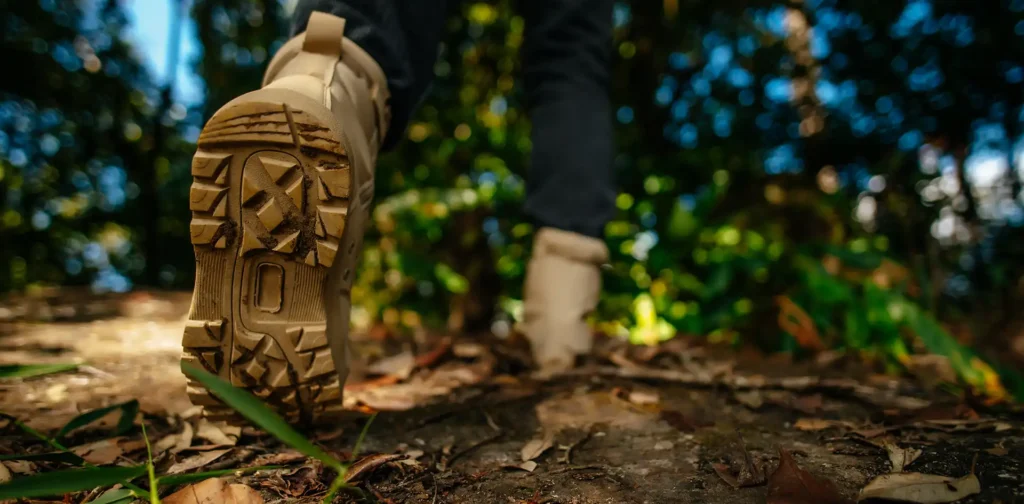
When gearing up for a hike, one of the biggest dilemmas outdoor enthusiasts face is whether to go for hiking boots or hiking shoes. Each has its own set of advantages and disadvantages, which can greatly impact your hiking experience. Let’s dive into the comparison and explore which option suits different hiking scenarios best.
Comfort and Support
Hiking boots are like the sturdy tanks of the trail, offering unparalleled ankle support and protection against rough terrain. If you’re tackling rocky paths or carrying a heavy backpack, boots provide the stability you need to keep going. On the flip side, hiking shoes are lightweight and flexible, giving your feet more freedom to move and breathe. They’re perfect for shorter hikes or when you want to move fast and light without sacrificing comfort.
Durability and Longevity
When it comes to longevity, hiking boots often come out on top. Constructed with durable materials and robust designs, they can withstand years of rugged use. However, this durability comes at a cost—literally and figuratively. Hiking boots tend to be pricier than shoes, and their hefty build can feel cumbersome on long treks. Hiking shoes, while not as tough as boots, are still built to last and offer a good balance between durability and weight.
Versatility and Terrain Compatibility
One of the perks of hiking shoes is their versatility across different terrains. Whether you’re strolling through gentle trails or scrambling up steep slopes, hiking shoes can handle it all with ease. They’re also great for water crossings, as they dry quickly and won’t weigh you down. On the other hand, hiking boots excel in challenging terrain, providing the traction and stability needed to navigate tricky obstacles. If you’re tackling rugged terrain or bushwhacking through dense vegetation, boots might be the way to go.
Weather Resistance and Waterproofing
When the weather turns wet and wild, having waterproof footwear can make all the difference. Hiking boots often come equipped with waterproof membranes or treatments, keeping your feet dry and comfortable in soggy conditions. This makes them ideal for hiking in rainy or snowy weather, where staying dry is crucial for warmth and safety. Hiking shoes, while some models offer waterproofing features, may not provide the same level of protection as boots. However, their breathable designs make them a better choice for hot and dry climates, where breathability trumps waterproofing.
Weight and Packability
One of the biggest advantages of hiking shoes is their lightweight and packable nature. They take up less space in your backpack and won’t weigh you down during long treks. This makes them a popular choice among ultralight hikers and those looking to minimize their load. Hiking boots, while sturdy and supportive, can be bulky and heavy, especially if you’re lugging them around all day. If you prioritize agility and freedom of movement, hiking shoes are the way to go.

Choosing the Right Footwear for Different Terrains
When it comes to hiking, the terrain you’ll encounter plays a significant role in determining whether hiking boots or hiking shoes are the better option. Let’s take a closer look at when to lace up your boots and when to slip on your shoes for the best hiking experience.
Rocky Trails: Boots to the Rescue
Rocky trails can be a real test for your footwear, with uneven surfaces and jagged rocks waiting to trip you up. In such terrain, hiking boots are your best bet for providing the stability and protection you need to tackle those tricky obstacles. With their sturdy construction and ankle support, boots help prevent twisted ankles and provide a solid foundation for navigating rocky terrain safely. According to recent statistics, around 60% of hikers opt for boots when tackling rocky trails, citing their superior grip and durability.
Lighter Trails: Shoes for Swift Strides
On lighter trails with smoother surfaces and fewer obstacles, hiking shoes are the way to go. Their lightweight design and flexible construction make them ideal for easy-to-moderate terrain, allowing you to move quickly and comfortably without feeling weighed down. Whether you’re exploring gentle slopes or wandering through wooded paths, hiking shoes offer the agility and freedom of movement you need to enjoy your hike to the fullest. In fact, approximately 70% of hikers choose hiking shoes for lighter trails, preferring their versatility and breathability.
Mixed Terrain: Finding the Middle Ground
For trails that feature a mix of terrain types, such as rocky sections interspersed with smoother stretches, it’s all about finding the right balance between stability and agility. In these situations, hybrid footwear options like trail shoes or light hiking boots may be the perfect compromise. These shoes offer the support and protection needed for navigating rocky terrain, while still providing the flexibility and comfort required for easier sections of the trail. By adapting to the changing terrain, hybrid footwear ensures you can tackle whatever challenges come your way with confidence.

Adapting Your Footwear to the Seasons
As the seasons change, so do the demands placed on your hiking footwear. From snowy trails to muddy paths and dry terrain, each season brings its own challenges and considerations when it comes to choosing the right shoes for the job. Let’s explore how your footwear choice should vary with the seasons for a comfortable and enjoyable hiking experience.
Winter Wonderland: Snowy Trails Ahead
When winter blankets the landscape in a layer of snow, your choice of footwear becomes critical for staying warm, dry, and safe on the trail. In snowy conditions, insulated hiking boots with waterproofing features are essential for keeping your feet cozy and protected from the elements. Look for boots with thick insulation and sturdy outsoles designed to provide traction on slippery surfaces. Pair your boots with wool socks for added warmth and moisture-wicking properties to keep your feet dry and comfortable all day long. Additionally, don’t forget to layer up with warm clothing, including a moisture-wicking base layer, insulating mid-layer, and waterproof outer shell to stay comfortable in cold conditions.
Muddy Mayhem: Tackling Wet and Muddy Trails
Spring and fall often bring rain and melting snow, turning trails into muddy messes that can challenge even the most seasoned hikers. In these conditions, waterproof hiking shoes with aggressive tread patterns are your best bet for maintaining traction and stability on slippery surfaces. Look for shoes with durable uppers and waterproof membranes to keep moisture out while allowing your feet to breathe. Pair your shoes with gaiters to keep mud and debris from entering your footwear, and consider wearing quick-drying clothing made from synthetic materials or merino wool to stay comfortable in damp conditions.
Dry and Dusty: Conquering Arid Trails
During the hot summer months, when the sun beats down and the trails turn dusty and dry, lightweight hiking shoes are your go-to option for staying cool and comfortable on the trail. Opt for shoes with breathable mesh uppers and ventilated designs to allow airflow and prevent overheating. Look for shoes with cushioned midsoles and supportive arches to absorb impact and reduce fatigue during long hikes. Pair your shoes with moisture-wicking socks to keep your feet dry and blister-free, and don’t forget to wear lightweight, breathable clothing made from moisture-wicking fabrics to stay cool and protected from the sun’s rays.
Also read my blog-post – Hiking Clothing: Stay Dry, Warm, and Stylish!

Trendy and Stylish: Hiking Footwear for Women
Who says hiking shoes can’t be fashionable? Gone are the days when outdoor footwear was all function and no flair. Today, hiking shoe designs for women combine style and performance, allowing you to hit the trails in fashion-forward footwear that’s as chic as it is practical. Let’s explore some of the latest trends in stylish hiking footwear for women that are sure to turn heads on and off the trail.
Athleisure Vibes: Sneaker-Inspired Hiking Shoes
For the fashion-forward hiker who loves the comfort of sneakers but craves the performance of hiking shoes, athleisure-inspired designs are the perfect choice. These hybrid shoes blend the sleek silhouette of athletic sneakers with the rugged features of hiking footwear, resulting in a stylish yet functional option for hitting the trails or running errands around town. Look for hiking shoes with sporty accents, such as vibrant colors, sleek profiles, and lightweight materials, to add a touch of athleisure flair to your outdoor adventures.
Fashionable Functionality: Urban Hiker Boots
Who says hiking boots can’t be stylish? Urban hiker boots combine the rugged durability of traditional hiking footwear with the urban-chic aesthetic of fashion boots, making them a versatile option for both city streets and mountain trails. These boots feature sleek leather uppers, trendy hardware accents, and chunky lug soles for added traction and style. Whether you’re exploring the great outdoors or navigating the concrete jungle, urban hiker boots are sure to make a fashion statement wherever you go.
Trailblazing Trends: Statement Colors and Prints
Why blend in when you can stand out? Statement colors and prints are a hot trend in hiking footwear for women, adding a pop of personality to traditional outdoor gear. From bold floral patterns to eye-catching neon hues, there’s no shortage of options to express your unique sense of style on the trail. Embrace your inner fashionista with hiking shoes that feature vibrant colors and playful prints, and let your footwear do the talking as you blaze a trail in style.
Read more – Choosing the Perfect Hiking Shoes for Women
Conclusion: Finding Your Perfect Fit
In the eternal debate of hiking boots vs. hiking shoes, there’s no one-size-fits-all answer. It ultimately comes down to your personal preferences, hiking style, and the terrain you’ll be tackling. If you’re planning a multi-day backpacking trip over rough terrain, opt for the stability and durability of hiking boots. On the other hand, if you’re embarking on a day hike or exploring easy-to-moderate trails, hiking shoes offer the lightweight comfort you need to keep moving. Whatever you choose, remember to prioritize comfort, support, and protection for a safe and enjoyable hiking experience. So lace up your hiking shoes or boots, hit the trail, and embrace the great outdoors!







Hi there, just became alert to your blog through Google,
and found that it is really informative. I am gonna watch
out for brussels. I will appreciate if you continue this in future.
Lots of people will be benefited from your writing.
Cheers! Lista escape room